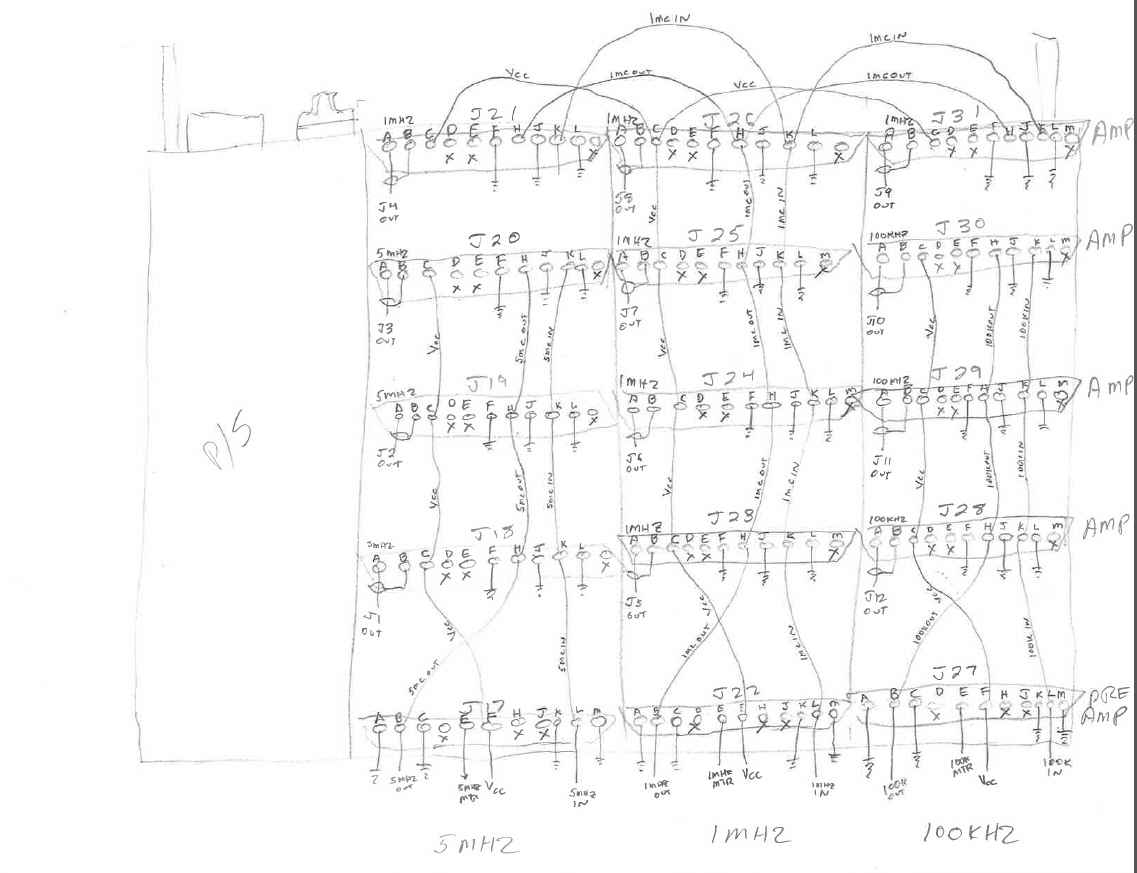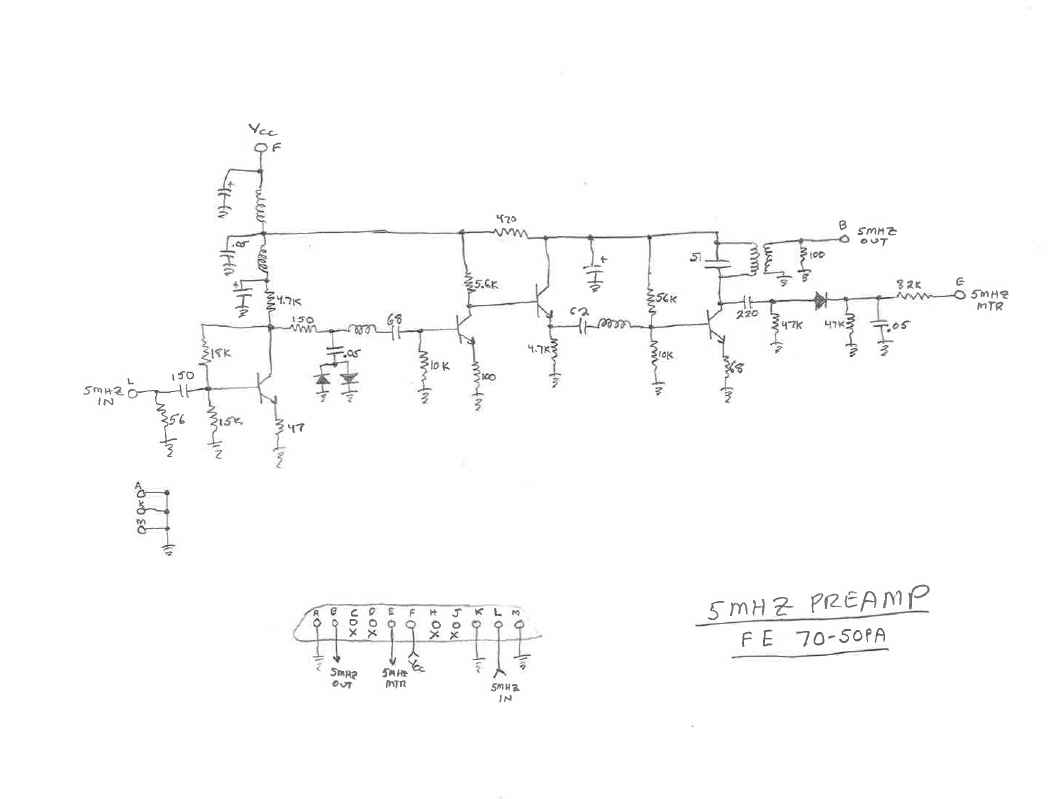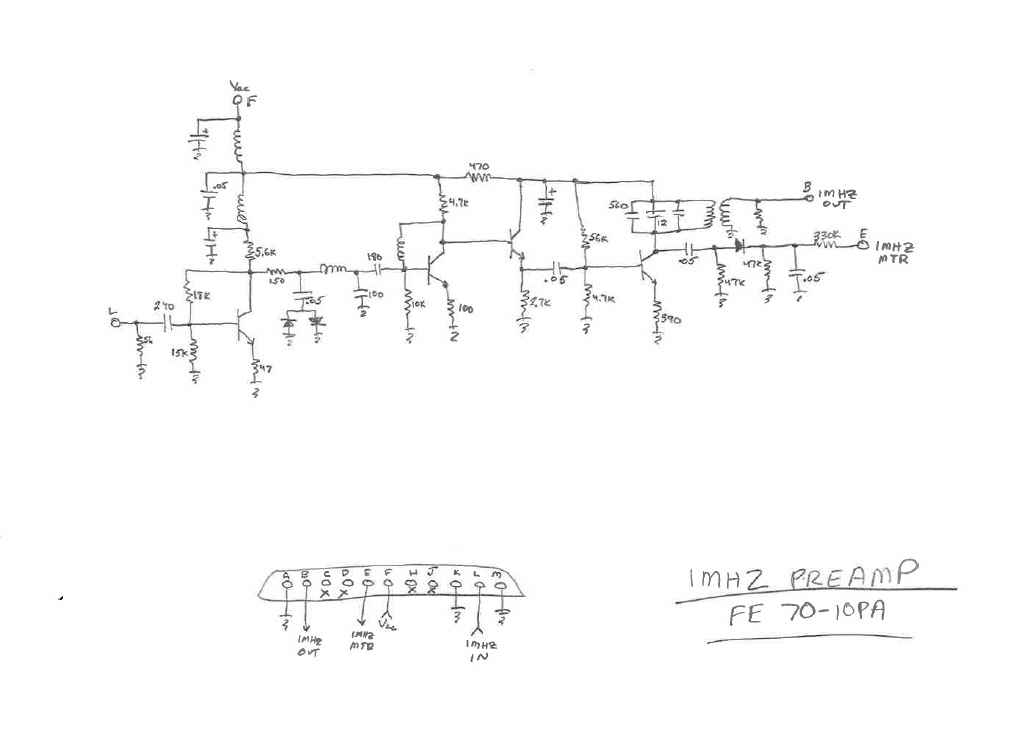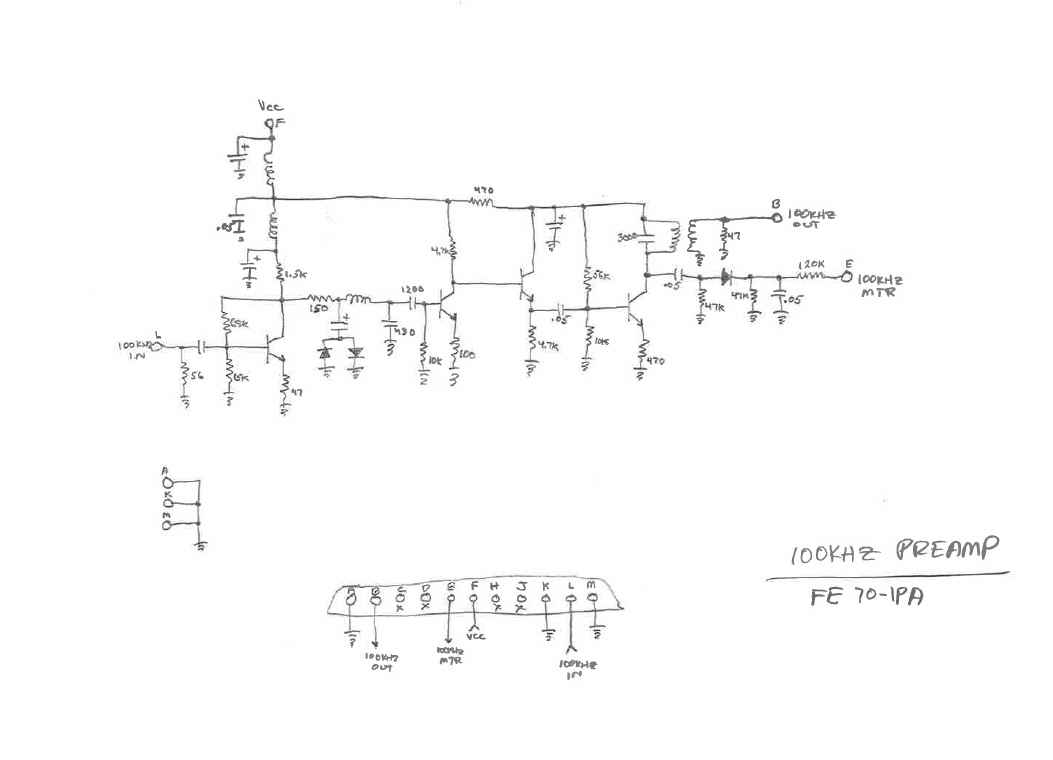%20Small.jpg)
Frequency Electronics
FE-73 Distribution Amp
Power Supply Rebuild
%20Small.jpg)
|
I picked this up on ebay back in early 2006. While it worked when I got
it, it was very erratic. Output levels were all over the place and the
power supply would shut down. It would be a pain in the neck getting is
started again. I would have to plug and unplug it repeatedly (because
there was no power switch) until it finally stayed up. I lived with this
problem for 11 years. Reason was finding any information on this unit
is like un-obtainum! I had no manual and I could find nothing on it.
Everyone I asked knew nothing about it. In Oct 2017 I finally decided I
was going to do something about it. Since I had no manual I manually
traced the power supply and the 100KHz, 1MHz, 5MHz pre-amps. What I
discovered was amazing, actually unbelievable. The power supply was not
wired correctly - FROM THE FACTORY! Basically the pass transistors were
shorted across by the wiring so there was no regulated supply to the
modules. B+ was directly off the rectifier filter. I found other wiring
issues as well. I will go into all these at the end of this page. But it
led me to believe this is why I couldn't find anything on it. I believe
there were lots of problems with this distribution amplifier and
Frequency Electronics just plain abandoned it rather than fix it thus
not many were made and there are almost none in circulation as a result
of poor operation and limited manufacturing. I fixed this problem though
and it is now a very good Distribution Amplifier that operates well. My solution was to completely rip out the original power supply and build a new power supply using a modern day LM317K 3-terminal adjustable regulator. |
|
|
%20Small.jpg) |
%20Small.jpg) |
| Here's some front and rear views with it back in the Frequency Standard Rack. Works flawlessly now with consistent output levels | |
|
|
|
The Old Original Power Supply
Additional Pics Of Circuitry I Traced
 Wiring Detail |
 5MHz Preamp |
 1MHz Preamp |
 100KHz Preamp |
| Thought I would throw these in as well in case someone out there also has this unit and probably can't find anything on it either. I did not trace the PA modules. They were loaded with parts and I just couldn't bring myself to manually trace those circuits. I figure if I ever need to troubleshoot on of them, then I would trace them. | |||
|
|
|||